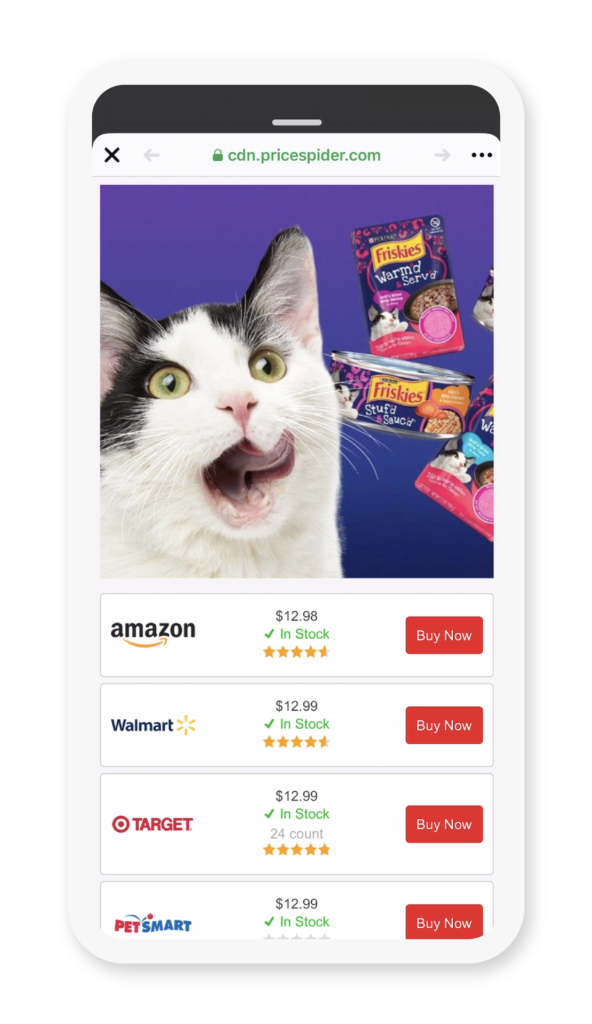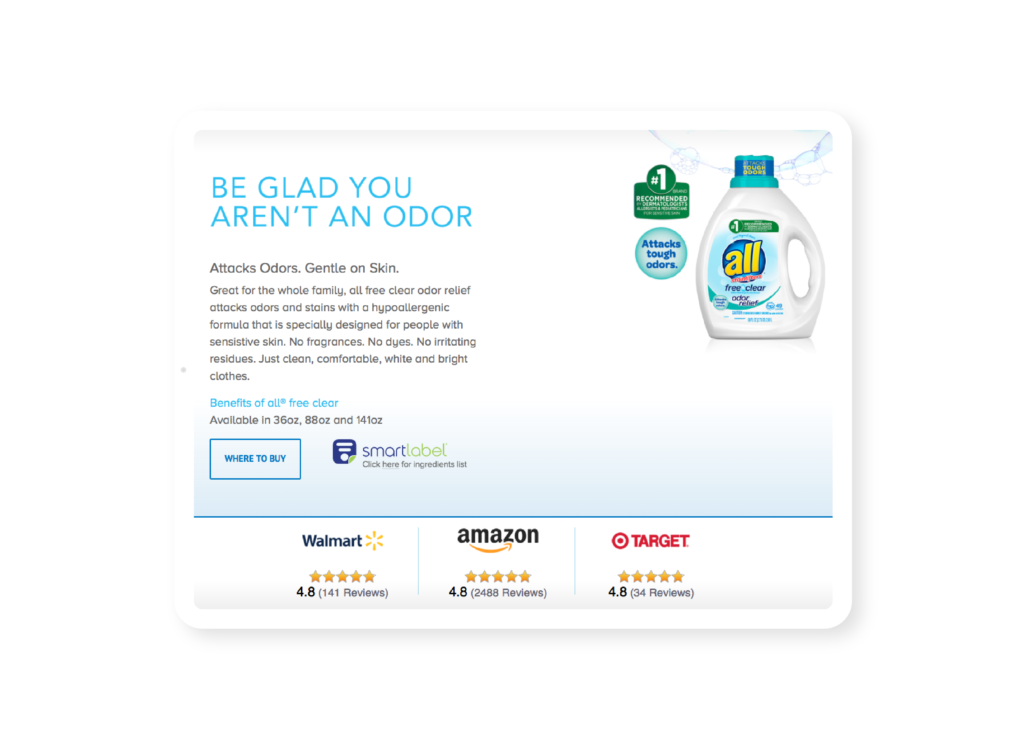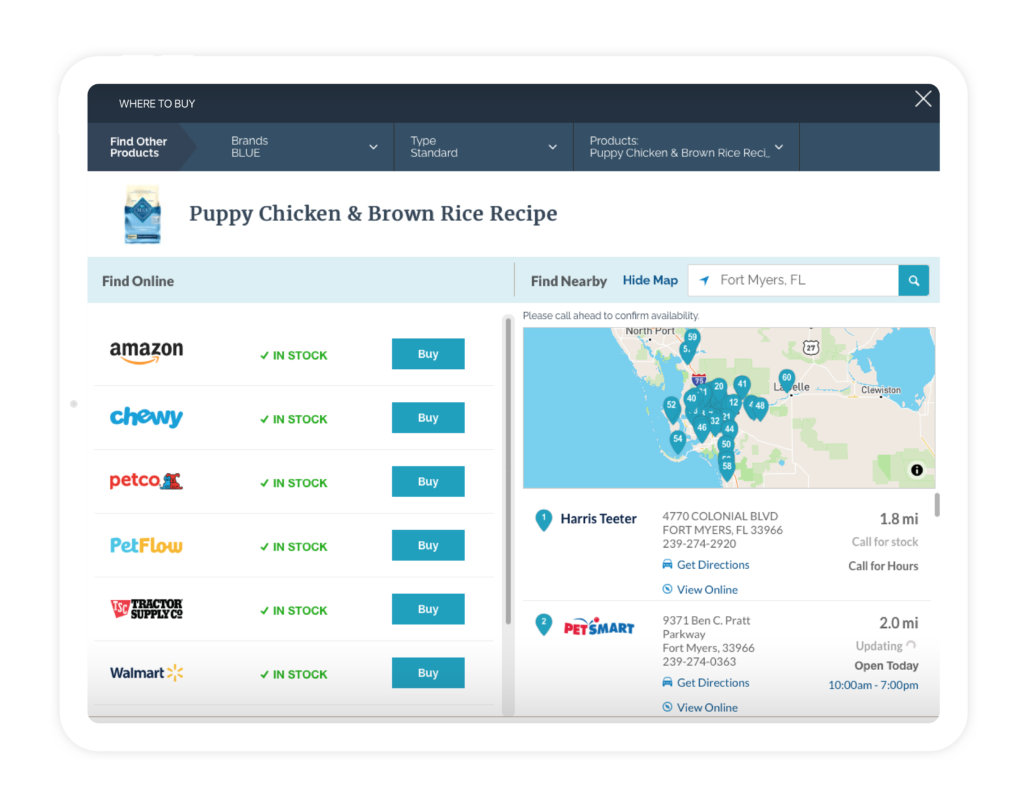There are hacks for everything: weight loss hacks, get rich hacks, even hacks to repurpose your favorite Swedish furniture in ways you’d never imagine. It’s all fine and good to transform your Bekväm step stool into a cat nook (and fantastic click bait by the way), but sometimes there are no shortcuts to happiness. Sometimes you need to look at the practical work it takes to eat healthy, accumulate wealth, and give Lady Hamilton a proper throne befitting a feline of her ilk.
And no matter how well your ecommerce marketing efforts are going, there are always ways to improve. Between your online and offline communication channels, there are a seemingly endless number of hacks and best practices to increase sales, drive engagement, or facilitate a better customer experience.
This goes beyond simply picking better product titles or optimizing your product descriptions. Ecommerce marketing requires you to consider the entire digital shelf and explore the best ways to reach and influence your target audience.
Want to get better at ecommerce marketing? Here are 15 practical tips.
1. Create personas
If you don’t know your customers, it’s hard to know what messaging will resonate with them. The better you understand their values, needs, and lives, the easier it is to talk about your products in relevant ways.
Creating personas — whether you call them buyer personas, customer personas, audience personas, or something else — is a valuable exercise in getting to know your customers. It forces you to collect, organize, and analyze your customer data and insights.
A persona is essentially a fictional representation of your target customer. Ideally, you should have one persona for every target customer. If you create one persona to represent multiple types of customers, it’s a lot less useful. And you don’t want to risk ignoring relevant customers, either.
All you really need to do is identify what type of person they are, using any relevant data you have access to, such as age, sex, location, job, income, or marital status, and then consider what goals they have or what problems they need to solve.
These insights may come from a combination of:
- Customer surveys
- Customer reviews
- Customer service
- Sales data
- Sales calls
- Previous marketing campaigns
- And more
This is a creative exercise, but it’s rooted in what you know about your customers. Once you have a handful of personas, you’ll be much better equipped to market your products to these demographics.
2. Make your content shoppable
In ecommerce marketing, engagement and sales are often treated as two opposing goals. Focusing on engagement results in fewer sales, and focusing on sales typically reduces engagement. But “shoppable media” is changing that.
The savviest ecommerce brands are using shoppable media to drive engagement and sales. Shoppable media closes the gaps between content and the cart by surfacing the information consumers need to choose a point of purchase right within a social media post, article, ad, video, or other content. Using advanced tools like PriceSpider’s Where to Buy, you can turn any moment into an intuitive shopping experience.


As you explore the best opportunities to create off-ramps to your product pages, shoppable media vastly increases your possibilities.
3. Utilize your packaging materials
Sooner or later, the vast majority of people who buy your product will open it. What will they see when they do? Your packaging materials are one of the most valuable offline channels you have.
Most people at least skim every pamphlet, card, insert, and brochure in the package, looking for instructions, other information they need to read before using the product, and things they may need to keep on hand. Consumers have also been trained to look for coupons and other rewards among these papers.
That’s why your packaging materials are such an effective way to market to your customers. You could upsell them with add-ons and related products that help them get more from their purchase. Or you could give them an incentive to review your product or join a loyalty program.
Your customers only open the packaging once, so it’s also worth using this opportunity to try to increase your touchpoints with these customers. Point them to your other marketing channels, such as an app, YouTube channel, or resource hub that can walk them through how to use their new product.
4. Give every channel an “owner”
The more people who can post to your marketing accounts or access your email lists, the more diluted your marketing channels tend to become. Brands of all sizes can run into the classic problem of having “too many cooks in the kitchen.” Instead of a single cohesive representation of your brand, you have as many themes, styles, voices, and goals as people involved.
For every channel, you should aim to have one point person — or at least one team — that takes ownership over it and ensures it is only used for its intended purpose. Someone has to be responsible for creating a strategy that aligns with your brand’s goals, and then implementing and enforcing it.
5. Experiment with new channels
Take any platform or marketing channel, and you’re bound to find ecommerce brands that have managed to make it a worthwhile investment. Whether it’s TikTok, Snapchat, YouTube, a new ad platform, or something else, it’s always worth exploring how your brand might be able to leverage these channels to generate sales, drive engagement, or accomplish another goal.
The challenge is to understand what’s unique about each channel, make informed predictions about what kind of content could be effective there, and recognize when to pivot from an experiment that isn’t panning out.
6. Equip yourself to collect the data you need
Imagine you took a multiple-choice test, and when you got your results back, it only told you how you did on 10 out of 100 questions. Say you got 7/10, or even 10/10. Would you say you did well on the test? What if you only got 3/10? Or less? Did you fail? You don’t know! You need to see the rest of the results.
When most ecommerce marketers evaluate and analyze their marketing campaigns, they’re only working with a fraction of the data: sales that came from their direct-to-consumer store. Since they can’t track transactions or collect in-cart data from retailers, they simply don’t know if their content or campaigns led to sales on another website.
Consumers often click through ads, videos, and other content to learn more about a product on a brand’s website. But when they’re ready to buy, most people already have a preferred retailer. So they leave and buy your product from another store. Your marketing still contributed to that sale and deserves some credit.
Our Where to Buy software uses universal tracking, to enable your brand to see when consumers click through your marketing and buy from a retailer. This lets you accurately evaluate your campaign’s success and failure and correctly attribute sales to the campaigns and channels that helped generate them.
7. Leverage social proof
Consumers feel more confident about products when they know most other people have had good experiences with them. Ratings and reviews are effective to demonstrate this. But there are a couple of problems with the reviews that come from your D2C store:
- There are usually not enough of them to demonstrate social proof
- Consumers don’t trust them as much as third-party reviews
Enough ecommerce brands have abused the system that consumers are generally more wary of the reviews they see on a brand website where you have far more control over which ratings get accepted or rejected.
That’s why so many brands now use our Ratings & Reviews tool to showcase their product ratings from prominent retailers’ sites. Someone skeptical of brand-controlled reviews will likely find a 4.5-star rating with 500-plus reviews on Target.com a lot more compelling.

And of course, Ratings & Reviews lets your customers click through the ratings to see your product page on the corresponding site, and you can track those sales. When our customers add the Ratings & Reviews widget to their product pages, on average, they see conversion rates increase 30 percent.
8. Recommend related products
Product recommendations are a staple of ecommerce. When someone is looking at a product, that’s the ideal time to show them items that work well with that product, meet similar needs, or appeal to other people who purchased it.
Most major retailers have this functionality, but you don’t get much say in what goes there. If you don’t already have a product recommendation section on your D2C product pages, that’s definitely something you should add. You can also recommend related products through other channels, like your follow-up emails, retargeted ads, or packaging materials.
Heads-up: Where to Buy lets you see what retailers recommend alongside your products and what percentage of sales they’re driving to those items. So if a retailer is taking the traffic you send them and diverting it to a competitor, you’ll know, and now you’ve got the receipts to talk with them about it.
9. Educate your customers
Your customers won’t get much out of your product if they don’t understand how it works. And they won’t be able to fully appreciate it until you teach them what makes it special. Educational articles, videos, pamphlets, and other resources are a great way to keep your brand top-of-mind and ensure your customers benefit the most from their relationship with you.
As new use cases come to your attention, share them with your customers. Ideally, find relevant topics your customers would be interested in. For example, if you make scented diffusers, your customers may be interested in educational content about cleaning specific types of spaces, getting rid of certain smells, or preparing your home for particular events.
This teaches customers to rely on your brand and your products when they encounter situations where you can support them.
10. Analyze themes in your customer reviews
A single person’s experience doesn’t say much about your product. But if lots of people are having the same experience (good or bad), pay attention. There may be something you need to proactively address.
Maybe people are using your product incorrectly or applying it to situations that it wasn’t designed for, and then saying it doesn’t work. Or they might be complaining that your product isn’t delivering on the promises made in your marketing.
Alternatively, reviews could lead to valuable discoveries. Perhaps there’s a new use case that you should be telling people about or value you should make more prominent.
You can learn a lot from the way people talk about your products. Make sure you’re paying attention and tracking trends over time.
11. Start a customer loyalty program
Once someone buys your product, the relationship isn’t over, it has just begun. You want them to use your products regularly, to buy from you again, and to recommend your brand to their friends, family, and coworkers.
To make those things happen, create a customer loyalty program, where they can:
- Receive exclusive discounts
- Hear about new products first
- Get rewards for completing desired actions (such as reviews, surveys, and referrals)
This isn’t just another content distribution channel. Make it feel like a membership to a special program. To do that, you’ll need to consistently provide value. If you do, you’ll create more loyal customers who become advocates for your brand.
12. Be responsive
People don’t expect instantaneous replies to every comment on social media or question on your product page. But when you leave someone hanging for days or weeks, other people see it and learn from it. It teaches them that they shouldn’t expect timely help from you, and perhaps your brand doesn’t have the resources to deliver a high-quality experience.
If you aren’t responsive, they start to imagine that your company is actually just some guy in a basement. Don’t be that guy.
Every time a consumer publicly reaches out to your organization, that’s an opportunity to win someone over and demonstrate your helpfulness to anyone else who’s looking.
This is especially important with the question sections and reviews on product pages. Others probably have those same questions, or find the concerns raised in a negative review compelling. Be responsive, answer those questions for everyone, and show other potential customers that you’ll help resolve bad experiences.
13. Capitalize on your competitors’ weaknesses
Just as you should be paying attention to your own reviews, it’s worth keeping tabs on what people are saying (or asking) about your competitors. Is there a flaw their customers consistently complain about? A promise they’ve under-delivered on?
Your competitors’ negative reviews are a gold mine of differentiating factors you should call out in your marketing. You don’t even have to address your competitors directly. Just highlight the areas they’re weak in, especially if that’s where your brand is strong.
The questions section on your competitors’ pages is also a great place to learn about information you should display more prominently. What do people wish your competitors included in the product description? Can you answer those questions more upfront on your page?
14. Map your customer journey
Customers don’t appear out of nowhere. Buying your product is part of a larger journey every customer is on. It starts before they buy and continues long after.
A customer journey map takes your buyer personas to the next level, envisioning how your target audience progresses from being unaware of your product to being an advocate for it. While the stages of this journey typically represent the developing relationship between a customer and your brand, the journey itself starts with a desire, goal, or problem your customers had before they discovered you.
Mapping the journey helps you recognize what your customers want at each stage, so you can develop the best strategy for reaching them at each touchpoint you have available.
15. Give your customers options
Choice overload is a real problem. You never want your customers to feel overwhelmed by too many options. When it comes to actually buying your products, consumers already have a handful of retailers they prefer to buy from. If you try to make this choice for them, you’re probably going to choose wrong.
When consumers can’t find their preferred buying method, some will give up. They don’t want to create a new account, and they don’t feel like searching for your product elsewhere. But some of them will search elsewhere, and then the problem is that you can’t control what they’ll find.
Your competitors will show up in search results. Depending on the search engine and what terms a customer uses to find you, your competitors may even show up first. Plus, what happens if they search for you through a retailer that doesn’t carry your products?
The best decision an ecommerce brand can make is to light up the path to purchase by displaying the most popular options. Consumers won’t be overwhelmed; they’ll latch onto the first retailer they recognize and use.

As a result, you’ll secure a lot more sales.
Want to see what Where to Buy software could do for your brand?
Schedule a demo today.

